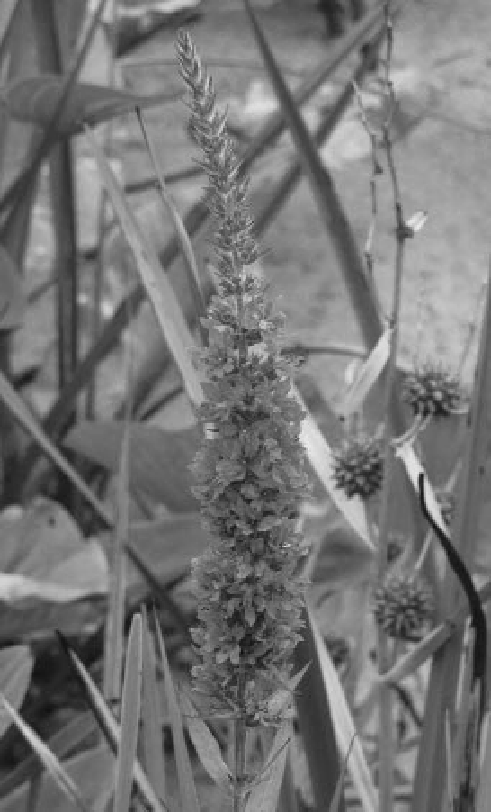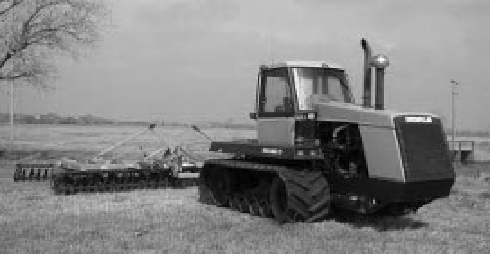Geoscience Reference
In-Depth Information
Figure 6-35.
Common reed (
Phragmites australis
) at
Batchelder's Landing in northeastern Massachusetts,
United States. A small helium blimp is visible in upper
left background. Photo by J.S. Aber.
Figure 6-34.
Purple loosestrife (
Lythrum salicaria
).
Close-up view of l ower stalk (see Color Plate 6-34).
Photo by J.S. Aber; Conneaut Marsh, northwestern
Pennsylvania, United States.
Figure 6-36.
Large Caterpillar tractor and disking
implement used to control cattail infestation at the
Cheyenne Bottoms State Wildlife Area, central Kansas,
United States. Photo by J.S. Aber.
milfoils, although without l owers or fruits it is
quite difi cult to distinguish it from other mil-
foils (Wisconsin Department of Natural Resources
2008). Eurasian water milfoil reproduces vegeta-
tively and may form dense mats on lakes and
ponds, thus crowding out native species and
impairing human use. It is transported easily via
boats, trailers, and i shing gear.
Many means exist to control invasive wetland
plants. The best one is to prevent the invasive
species from reaching new territory. In many
cases, invasive species were introduced by
unwitting people purposefully or accidentally.
Education about the dangers of invasive plants
and mandatory inspections of boats and i shing
gear are ways to minimize the potential for
transporting invasive species. Once an invasive
wetland plant has become established, however,
other methods may be attempted.
• Physical methods include blocking sunlight
by placing black mats or sheets on the water
surface or bottom. Artii cially raising or low-
ering water levels is a simple way to either
drown or dry out the infested area. Mechani-
cal removal or weeding of the offending
plant might involve pulling, digging, cutting
or raking (Fig. 6-36). For plants that







